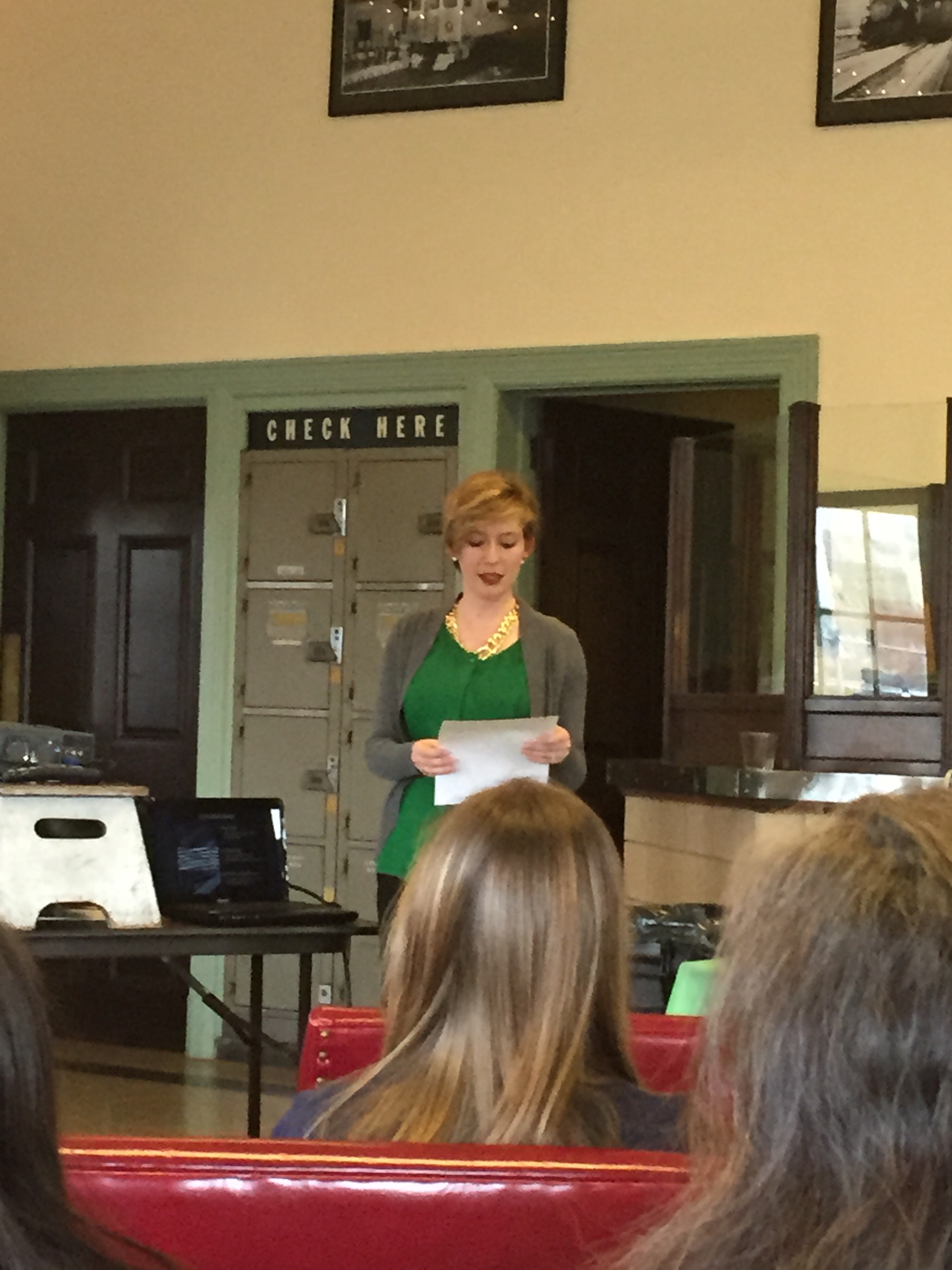Dawn Wallace, a graduate conservation intern from SUNY- Buffalo State, presented work she has undertaken at the National Museum of American History (NMAH) for the exhibition “Hear My Voice: Alexander Graham Bell and the Origins of Recorded Sound” which opened January 2015.

Wallace presented a brief history of Alexander Graham Bell and the Volta Laboratory to give context to the exhibition. At the Volta Laboratory, which was located in Washington D.C., Bell, his cousin and chemist Chichester Bell, and instrument maker Charles Sumner Tainter experimented to improve upon Thomas Edison’s earlier recording technology. Many of these recordings are too fragile to be read by conventional playback methods. The exhibition features some of these historic recordings as read by IRENE, a collaborative project that stands for Image, Reconstruct, Erase, Noise, Etc. It is a non-invasive means of imaging fragile sound recording technology in order to hear the recorded sounds without damaging the objects. The materials used in early sound technology vary widely and can be susceptible to physical damage, which is why preserving both the physical objects and the information contained on them is so important.
Wallace conserved several of the objects that are featured in the exhibition and she presented three of these treatments for the guild: a graphophone deposited at the Smithsonian in 1881, a photodisc, and a wax disc on binder’s board.
The photodisc, essentially a glass plate negative, was created by exposing the prepared plate to a beam of light that was interrupted by a colored jet of water. It was recorded in November of 1884 and features the word ‘barometer’ said repeatedly. It was treated for surface grime, a painted museum label across its center, and a crack radiating from its center to the edge. Wallace cleaned the plate with eraser crumbs, and then reduced the painted label mechanically before she applied an acetone:ethanol Klucel G poultice to remove it completely. The crack was stabilized with B-72 in toluene, making the plate more safe to handle and suitable for exhibition.
The wax disc on binder’s board that Wallace treated features the voice of Alexander Graham Bell. Its composition is likely a combination of soft paraffin wax, hard Japan wax, and perhaps even cocoa butter. The board is also impregnated with paraffin wax. It had surface dust adhered to the wax and deep cracks running throughout. The loose surface dust was reduced with a soft Japanese bristle brush. After several tests, consolidation treatment consisted of introducing 5% paraffin wax in toluene at the edges of cracks, which successfully stabilized the wax on the disc.
The third and final treatment Wallace presented was of a graphophone. It is actually an Edison phonograph which was modified to hold a wax coated steel cylinder. The main goals of this treatment were to reduce surface dirt and corrosion. Mechanically reduced surface corrosion was mechanically reduced and cleaned with petroleum benzene. During the treatment, Wallace made some interesting discoveries. She found wax on the stylus head, possibly from the original recording, and after instrumental analysis was able to characterize the mouthpiece as molded hard rubber.
For more information on IRENE, please visit http://irene.lbl.gov/.
Summarized by Great Glaser.